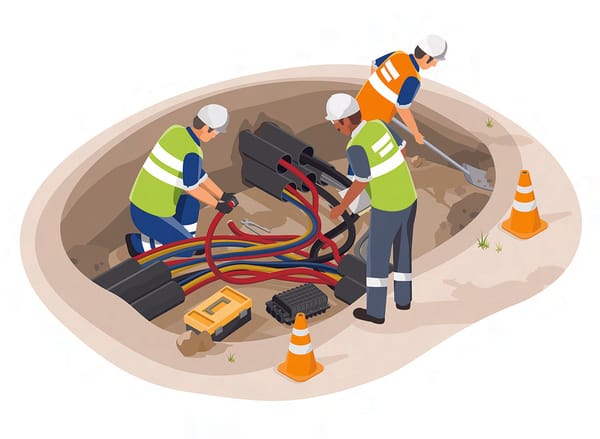Trade Alert: Market commentary PLUS streaming vs broadcast analysis
I’m trimming about 1/5th of my common stock long in Fitbit which is up about 20% since we we scaled into more of near $35 back a couple weeks ago. I’m also trimming some Amazon, selling about 1/5th of my position there which is up huge in the last few months.
On the flipside, I’m also scaling into a 1/5th-sized position in WFM, tranching into a little more common while the stock is down about 10% since I first started buying it again.
Just following our playbook and being disciplined as usual.
Names like $GOOG, $AMZN, $NFLX, $FB, $AAPL and others march near or at new all-time highs while so many other names are getting killed. It’s a no BS stock market where any BS is sold off hard and any real growth is rewarded big-time. It’s a of a winner, “tale of two markets” kind of market these days, making this year truly a stock picker’s market. Part of it is the money coming out of the losers in tech like $TWTR, $GPRO, $YELP and so on and part of it is money that’s fleeing the energy and commodity sector looking for a new home too.
Winners and strong charts are the name of the game right now. Oil, natural gas, and other energy subsectors have all been in utter collapse this year, making the “Peak energy” argument and those who invested on the belief that energy prices would never cycle lower again look rather foolish. And when you’ve got real money on the line, as this website’s title makes clear, being foolish will get your thrown out of the game, as investors take their money out and find trends and managers that didn’t fail.
All of which makes me wonder if these trends are about to reverse!
Of course, the big problem with trying to anticipate such a trend reversal is two-fold — there are reasons to continue investing in great Revolutionary concepts like Amazon, Google, Apple, Facebook, Netflix, and others that have been the big winners over the last year, five years and ten years. Secondly, stock prices and market trends often go further and last longer than most anybody believes they can.
Remember that you don’t have to be all in our all out or all long or all short at any given time. So like I’ve been saying lately, let’s not step off the gas pedal or ride on our laurels here, but let’s do be disciplined and smart and flexible. Let’s continue to strive for some more homeruns.
It’s been a hell of a run being long the Revolutionary growth stocks this year and especially for the last five years. It’s been a hell of a run being short struggling stocks like Valeant and Pandora. I’ll continue working my behind off finding these kinds of longs and shorts and balancing our portfolio and trying to stay ahead of the big trends.
By the way, a great way to catch up on what you missed this weekend and get ready for this week. #RECAP the weekend and get up to speed with what has been happening. Features American Pharaoh, Kobe Bryant, $CMG Ecoli breakout, $WMT & more. https://www.scutify.com/recap….
Now let’s talk TV.
For more than 10 years, I’ve been explaining that content is king as broadcast television is dying, and today young people especially, are increasingly “cutting the cord from cable.”
But it’s about to get even worse for satellite companies and the traditional broadcast television business model. Why? One of the last bastions of strength for broadcasters is “event programming” like sports, from daily baseball and basketball to weekly NFL games and underscored by the ever-growing one-day audience for the Super Bowl. The NFL makes tens of billions of dollars every year by selling the rights to its games.
Clearly, the broadcast channels like NBC, CBS, Fox and ESPN are then turning around and selling ads for those broadcast games, also generating tens of billions of dollars in revenues and billions in earnings every year.
But as the world’s sports fans increasingly consume TV and movies on apps on their smartphones, tablets and TVs, the need to subscribe to a cable package that used to be the only way to get access to those TV shows and movies fades.
I still vividly remember how nobody even understood what I was talking about when I asked them if they were looking forward to the day when they would be able to stream any show at any time from anywhere back in 2006 when I did a Cody Cam segment on the future of video for Kudlow & Company on CNBC. I later explained to Carl Quintanilla that the cable and satellite companies were going to eventually be in big trouble because being able to stream even live TV events was a more efficient way for users to get much lower prices than you get with a traditional TV cable/satellite contract.
Well, with the wild success that Netflix (NFLX) is continuing to have and more recently the relative success of Yahoo! (YHOO) live-streaming the Jaguars vs. Bills NFL game in London around the world, everybody finally gets it. But it’s still very early in this media world tectonic plate shifting. The impact that streaming has had so far on broadcast TV is minimal. Streaming vs. broadcast is in the first inning, about equivalent to the limited but soon to be outsized impact that the Internet had on newspapers back 15 years ago when everybody realized that the Internet would forever revolutionize the newspaper business.
If the NFL can directly reach billions of people on their smart devices, streaming boxes and smart TVs, why wouldn’t they go ahead and cut out the middle man, the broadcast networks? Ten years from now, it’s likely we’ll all tune in to the Super Bowl on the NFL Android/iOS app using the HD projector in our smartphone (or smartwatch or other small wearable projector device) to stream it live on a 6-by-6-foot clear space on your living room wall. And the NFL itself will eventually be selling subscriptions for direct access to all its content and games and capturing the tens of billions of ad dollars spent from companies advertising in that content.
You already see some of this happening as the NFL Network, NFL Red Zone and other major sports leagues create their own cable subscription networks and increasingly stream their product (games included) on apps and websites.
Cable at least has the upside of being a broadband pipe to the home and business. But that’s not going to be enough to offset the losses of cable TV subscriber fees. And anyway, cable broadband technology, with its expensive trenching and wiring costs, will lose to wireless over the long term.
Wireless is going to the dominant means of broadband connectivity in future decades, too. Distribution costs via streaming over a broadband pipe you’re already paying a set monthly fee for, whether via wireless or cable or DSL/Wi-Fi, are going to zero vs. paying $100-$200 a month in cable and satellite bills. We’re talking about a slow-motion movement that will pick up steam in small part due to the surprising success of the Yahoo! NFL live stream, but especially because of the ongoing outsized success of Netflix.
So broadcast is truly dying. Streaming is the future. And it’s not too late to get on the right side of both trends. It’s this very concept that has always kept me wanting to invest in content owners, rather than distributors.
Netflix, with all its original programming plus the app platform, is both. And speaking of Netflix, what if Netflix gets into streaming live sporting events?
ESPN is at least leveraging this new trend and allowing users of its Watch ESPN app to stream live events already. I also use Dish’s (DISH) Sling service to stream games including the NFL RedZone channel on my iPad or iPhone when I’m on the go, but its quality of signal is lacking. Believe it or not, back in early 2007, I actually also used Sling to show myself being streamed live on CNBC back on Kudlow & Company, too, using it as an example of the future.
Some conclusions then: Stick with companies like Netflix that are investing in their apps (and original content) because the future for all forms of media increasingly will center around apps rather than sites, channels or stations. Stick with content owners like Sony(SNE) or Lions Gate (LGF). Keep investing in the smart-device platforms like Google’s(GOOGL) Android and Apple’s (AAPL) iOS. Stay away from (or maybe get short) satellite broadcasters of all sorts from DISH Network (DISH) to AT&T (T) to Sirius XM. It might be time to take a look at Akamai (AKAM), which is getting slammed after a disappointing earnings report recently and I am indeed digging into that name. Losers include satellite and broadcast TV companies, which has me digging into the potential of shorting AT&T (T), though the nearly 6% yield there has me sidelined for now.




